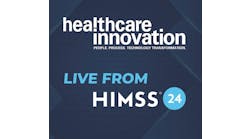We’re living in strangely paradoxical times these days in U.S. healthcare, when it comes to the leveraging of data analytics. No one would disagree that leveraging data analytics to execute on value-based care delivery and population health will be one of the most essential critical success factors for hospitals, medical groups, and health systems going forward in the next several years. And yet, more evidence is coming out that seems to indicate that patient care organization leaders are seriously behind the curve in the fully robust adoption of analytics tools.
One such indication came out a week and a half ago from the Tampa, Florida-based Black Book Market Research. In a January 13 press release, Black Book noted that “The healthcare analytics market is soaring, exceeding $14 billion spent in 2019 and anticipated to grow at a CAGR of 23.5 percent to $40 billion by 2024. With the recent explosion of various analytics applications and models implemented, 95 percent of hospitals and physician group leaders have access to supportive decision-making tools, sharply up from 63 percent in 2016. Yet according to a recent industry survey, utilization of advanced analytics for key decision-making and strategic planning is self-reported as negligible by eight in 10 surveyed healthcare managers.”
And the release quoted Doug Brown, president of Black Book, as stating that, “Besides occasional dashboard viewing, post-implementation analytics and business intelligence software and services go greatly underutilized, particularly observed in the survey responses from financially under-performing hospitals in 2019.” Indeed, Black Book’s research survey of 748 provider organizations found that 84 percent of respondent c-suite officers and board members polled only use analytics "to a limited or minimal extent to generate commercial or outcome insights.” In conducting its research, Black book had polled 3,190 “ implemented users of descriptive, predictive, cognitive and prescriptive analytics… including financial, operational, informational and clinical users from health systems, hospitals, medical groups, ambulatory settings and ancillaries.”
“The accessibility of integrated data and the surge of new technologies, which empower providers to analyze data more comprehensively, allow every healthcare manager to make strategic decisions and costs implications and measure goal progress analytics,” said Brown. What’s more, as the press release noted, “Sixty-five percent of hospital system managers surveyed that have analytics applications available to them state they dismissed using advanced analytics in the past 12 months due to a lack of strategic direction, absence of internal data scientists, financial resources and/or a lack of reinforced training.”
And yes, honestly, those findings should be seen as shocking by anyone who’s been paying attention lately. As all of our team’s reporting has been finding, success with analytics has been absolutely essential to overall success with any form of value-based contracting, all of the leaders of pioneering patient care organizations are telling us.
For example, among those I interviewed for our November/December 2019 cover story on data and population health was Joseph Drozda, M.D., director of outcomes research at the 40-plus-hospital Mercy Health, based in St. Louis. Dr. Drozda is one of the leaders of an initiative whose goal has been to proactively improve the identification of congestive heart failure (CHF) patients for whom the implantation of cardiac pacemakers is appropriate. The timely identification of those patients had been lagging, and Drozda and his colleagues created a robust data set encompassing all 120,000 patients in the system with heart failure, and then leveraged the data in that data set to identify those patients needing cardiac pacemakers. “There’s a lot of work involved in coming up with conclusions in our analyses,” Dr. Drozda told me. A lot of people in the past have tried to just gather up raw data from EHRs, and it’s not really usable for meaningful analyses. That’s been a major learning for us.”
Similarly, at the Wilmington, Delaware-based Nemours Children’s Health, a multidisciplinary team has been sifting through immense amounts of digital data, and turning it into actionable alerts and prompts for clinicians. As Alex Koster, director of analytics and technology at the VBSO (Value-Based Services Organization) at Nemours told me, “We have the ability to look at data across all our markets for our primary care population: 112,000 patients across Delaware Valley, and 170,000 altogether, including Florida. We’re able to look at different data sources—payer files, rosters, gap in care reports, not yet adjudicated claims, but we have the capacity to do that. And we have the capacity to do more advanced analytics, like composite clinical risk scores, to stratify our populations. And what are the team members learning? “As you look through different lenses—for example, when you look at who your high utilizers are for ED services, or readmissions, and then add another filter, such as their clinical risk score, you can see opportunity with regard to historical utilization and clinical complexity,” Koster told me. “You also find contradictions, where a patient isn’t clinically complex, but presents with high utilization.”
And it’s not only in clinical areas that the robust leveraging of data analytics is turning out to be absolutely essential. In our September/October 2019 cover story on revenue cycle management, I interviewed leaders from a variety of patient care organizations who agreed that analytics is helping to fuel their push to achieve the highest rates of charge capture possible.
As I noted, “At the vast, 40-plus-hospital UPMC health system, based in Pittsburgh, huge strides have already been made to optimize revenue cycle management operations in the emerging value-based environment. Jeffrey Porter, chief revenue cycle management officer at UPMC, oversees a staff of over 2,600 FTEs, in an organization with annual revenues of $20 billion—half of those revenues coming from the provider side of the organization, and half from the UPMC Health Plan, which is fully integrated with the provider component of the system.”
And Porter told me that “We’ve been addressing revenue cycle complexities for a while now with our health plan, so it’s something we’re used to,” Porter explains. “In fact, we’ve partnered together to even align some of the revenue cycle functions together, to function as an IDFS—an integrated delivery and financing system—to show that we’re aligned around the patient. So we’ve looked not only to better serve our patients and members, but to be as efficient as possible. We’ve even integrated some of our care management functions together. For example, a patient comes into the ED—usually, there’s a lot of back-and-forth between and among clinicians, their care managers, and the health plan’s care managers. For our patients who are also care plan members, we’ve integrated those functions to make them more streamlined and more efficient.”
And while Porter oversees a staff of more than 500 coders altogether, a key element of his team’s success in RCM overall has been the placement of 30 specialists on the organization’s clinical documentation improvement (CDI) team. The organization has interfaced its core coding application with its electronic health record (EHR), and, as Porter told me, “Our providers document into the EHR, and then all that information feeds into the coding platform. That platform has two functionalities” relevant to optimization: “one is computer-guided coding software that can help assist with DRGs and code sets, but also runs through a series of queries that looks through a series of conditions that potentially lack appropriate documentation. This identifies opportunities for improvement in coding and documentation; those alerts reach the CDI team, who then query the doctor,” to obtain specificity on the documentation, in order to achieve optimal reimbursement. “The results of this program speak for themselves,” I noted: “in 2018 alone, Porter estimates, his CDI team’s work led to the capture of $30 million in additional revenue.”
And, as I reported in our May/June 2019 cover story on two-sided risk, the leaders at the Cleveland-based MetroHealth have been achieving startling results in managed care contracts, including Medicaid managed care contracts, in the Cleveland metro area, which MetroHealth serves as its public health system.
Nabil Chehade, M.D., senior vice president, population health, and David Kaelber, M.D., CMIO, spoke of MetroHealth’s successes at our Healthcare Innovation Summit last March 20, in a presentation entitled “MetroHealth’s Road to Success: The IT Approach for One of 30 Successful National MSSPs,” referencing the Medicare Shared Savings Program.
As Dr. Chehade noted last March, “In the first year [in the MSSP program], 2014, we overspent by 2.1 percent. In the second year, we came under, by 1.7 percent, still didn’t achieve any savings. 2016, we came under by 8.1 percent. And in 2017, when we moved from one-sided to two-sided risk, we were 10.2 percent below our benchmark.” Meanwhile, in one commercial risk-based contract that MetroHealth is involved in, which is actually with Cuyahoga County on behalf of its employees, “We were able to stay at 7.36 percent below the established benchmark in 2017, and shared half of that savings with the county.”
And, as Dr. Chehade told me immediately after his and Dr. Kaelber’s presentation, with regard to their organization’s success so far in two-sided-risk contracts, “The challenge is truly knowing your data, and committing yourselves to do the work and invest. That’s what gave us the confidence. If we’re going to do those things, and invest, we might as well go for risk, as long as the reward becomes larger.” Very importantly, he added, “The second factor is understanding your share of wallet for a particular population: how much money is spent inside your organization versus outside it? So if you’re trying to decrease total cost of care, you can more than make up for that loss of revenue through shared savings and through maintaining patients within your organization. That becomes a very positive cycle that will even help you within fee-for-service [payment arrangements]; but it’s especially important when you’re doing two-sided risk, when the rewards are high.”
It's past time to move forward
So, given all this, it’s hard to imagine why patient care organizations haven’t moved forward faster nationwide, even as the pioneer organizations keep breaking new ground. On the one hand, Black Book found that 93 percent of hospital and physician financial executives believe exploring new ways to use data analytics is critical to meeting the demands of value-based reimbursement and healthcare consumerism. Yet at the same time, Black Book surmises that 67 percent of all payer data and 90 percent of all data within a provider enterprise goes unused for advanced analytics, despite the fact that more vendors in the industry are promoting products and services offering immediate ROI of big data and using technologies to capture even more data from external sources.
What’s more, profitable provider organizations appear to understand the power of analytics better than hospitals with negative margins. Black Book identified 66 hospitals that employ chief innovation executives in Q4 2019 where analytics programming and executive education have been prioritized. Eighty-nine percent of the 66 health systems with innovation officers confirm that big data is actively being used in informed decision-making, up from just 13 percent in 2015.
To that end, 97 percent of health systems with chief innovation officers also operated with positive operating margins in 2019. Only two in 66 of the health systems with chief innovation officers underperformed in the last fiscal year, but both of those systems improved financially from the previous year.
“What does that say about all the rest of the nation’s C-suites that have no innovation leader and are not making strategic decisions that rely on advanced analytics?” Black Book’s Doug Brown asked. Indeed, what does it say? It’s time for the leaders of patient care organizations nationwide to get moving in this area—indeed, it’s already past time.


